Paris as seen by the French New Wave
This article is in English. Click here to read it in French.
France experienced a massive cinema revolution during the 1960s. The country’s post-war film industry was shaken up by a new generation of young Parisian filmmakers who called themselves the ‘French New Wave’. These filmmakers offered a newer, more original and intimate perspective of the French capital.
Out of the studio and into the light
For a long time French movies had traditionally been shot in studios, resulting in Paris being represented in a reconstructed and rather conservative way. Moreover, scenes of the capital filmed during the war were not readily adaptable to the screen. Such imagery had become less palatable to the French public, who sought to escape its sombre, everyday reality.
Upon gathering in the ‘Cahiers du Cinéma‘ (Notebooks on Cinema) editorial room, the New Wave’s future filmmakers – who were, chiefly, theorists – realised how artificial such studio-shot scenes really were.
Helped by economic factors and rapidly evolving technology, these filmmakers decided to break free of the restrictions imposed on them by the era’s preferred aesthetics. By now it had become possible to film city scenes by night, and thanks to new high-speed reel, they were also able to use new lightweight cameras to shoot outdoors. In 1958, Louis Malle was the first director to try out these new technologies during the filming of ‘Elevator to the Gallows’.
This movie was followed by a series of experimental films which captured the turmoil occurring in the French capital, giving the cinema-goer a realistic impression of the city. These movies showed scenes that reflected a reality which were not retouched, dramatised or false.
The French capital as a background
The New Wave showed Paris from an alternative angle. The filmmaker walked the streets of the French capital with his camera on his shoulder, following the actors. The filmmakers’ determination to find an authentic perspective led to the creation of a documentary-style approach to the representation of places, people and everything in front of the camera lens.
In Jean-Luc Godard’s ‘Breathless’, Paris is depicted as if in a news report. The famed director’s preference for realism was evidenced by a multitude of shots of busy Parisian streets, buildings, coffee shops and historical monuments.
The soundtrack perfectly relays the outdoor cacophony of horns, engines, brakes, police sirens and other noises typical of a large city. We become submerged in a new world – a modern world in which the city is revealed to us.
Paris was again immortalised by the camera in Rivette’s ‘Paris Belongs to Us’, which reveals diverse aspects and districts of the French capital.
In the same vein, Eric Rohmer’s first movie ‘The Sign of Leo’ features a map of Paris as the film’s central motif where all of its plots begin and end.
Paris as a home town
François Truffaut’s ‘The 400 Blows’ is allows us to experience the everyday reality of life in Paris. The film is centred on Antoine Doinel, who, together with his friend René, plays truant and passes his days by walking the city, reading and going to the cinema.
In this film, Truffaut presents a touching and idealised version of Paris which serves as the backdrop to the life of the film’s hero, played by Jean-Pierre Léaud. Imbuing the film with authenticity, the director portrays Paris as a home town in a loyal and familiar way, affirming the city’s charm.
In Agnes Varda’s ‘Cléo from 5 to 7’, tiny details of Parisian life are experienced from the point of view of a young Parisian girl.
Ironically, the last phase of the first wave of this burgeoning movement was marked by a 1965 collaborative project by six directors, entitled ‘Six in Paris’.
Filmmakers Claude Chabrol, Jean Douchet, Jean-Luc Godard, Jean-Daniel Pollet, Eric Rohmer and Jean Rouch drew on the origins of the New Wave, to offer a personal point of view of the French capital captured in six short films – set, of course against an authentic backdrop.
Do you have a favourite New Wave film or actor?
Image credits:
1. The 400 Blows Jean-Pierre Leaud via Wikimedia.
2. Ascenseur pour l’échafaud, by Michaelrogers via Flickr.
3. Jean-Luc Godard at Berkeley, 1968, via Wikimedia.
4. À bout de souffle, by Swan of Kennet via Flickr.
5. Affiche des Quatre-cent coups.
6. Cléo de 5 à 7 de poppet with a camera via flickr.

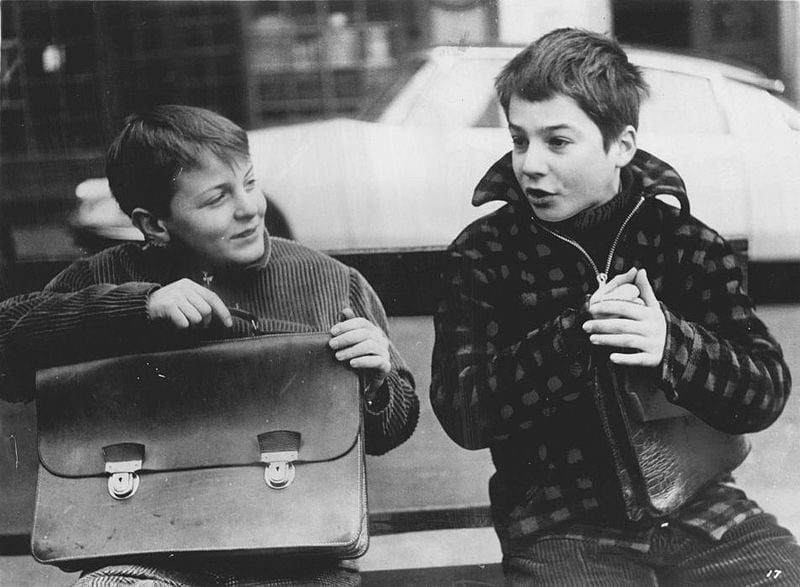

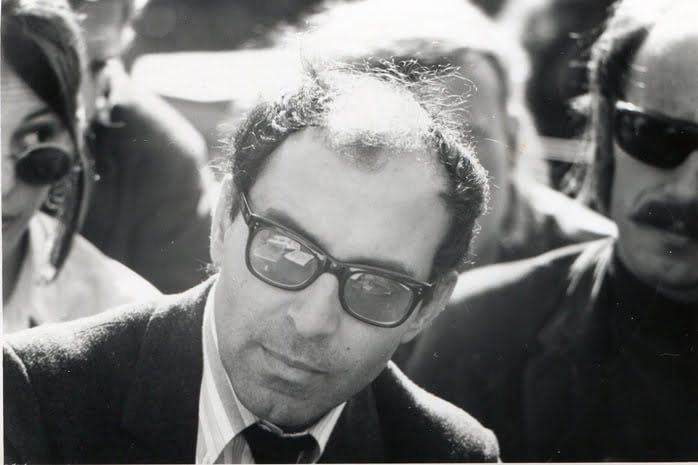
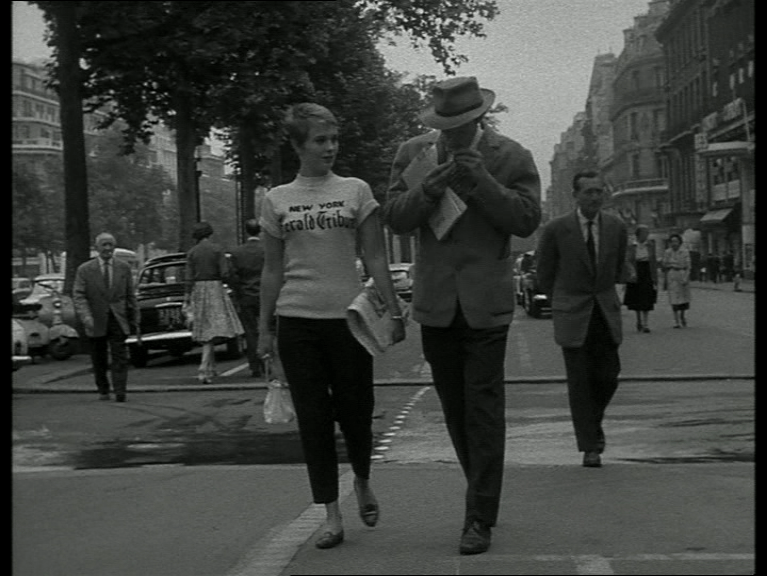
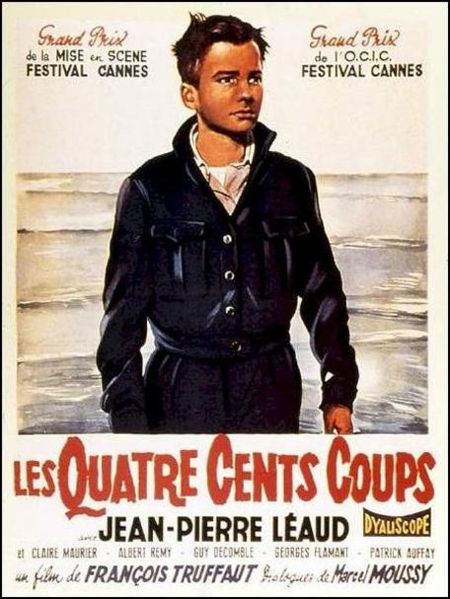
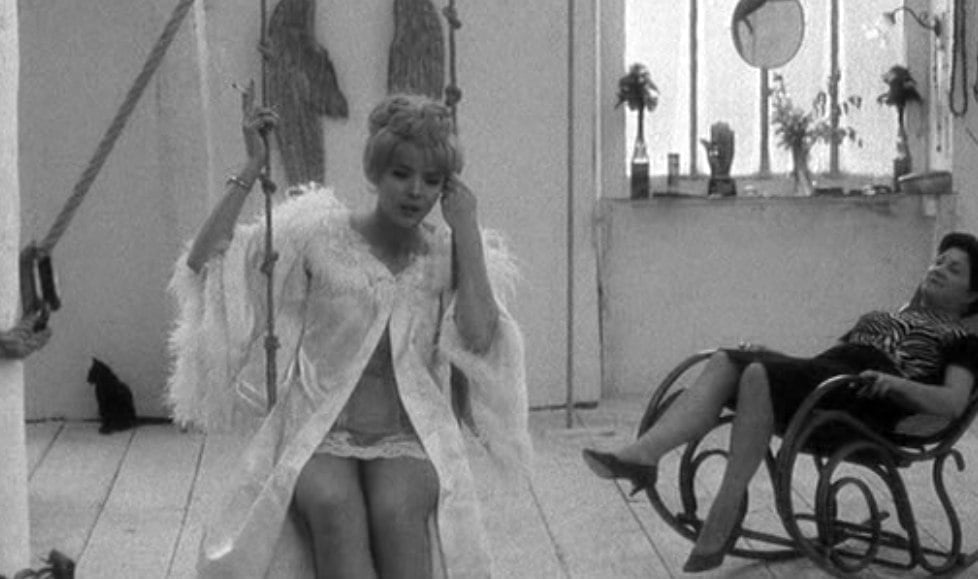






Bonjour, Laure,
Je viens de suivre un lien afin de regarder le clip du film “À Bout de Souffle” de Godard. Je pense à ce film avec plein de nostalgie car c’était le premier film français que j’aie jamais vu (dois-je mettre le verbe au subjonctif?;c’est incontestablement la vérité pour moi), et cette redécouverte me pousse à en dégoter un exemplaire. (Faut chercher en ligne). C’était en 1972, lorsque je faisais mes études de l’année terminale (de ce qui s’appelait à l’époque le HSC; c’est actuellement, et depuis plus de vingt ans, le VCE) -on avait un prof qui nous a fait connaitre plus d’un film français et figurez-vous que c’était dans un établissement secondaire catholique; je vous jure que dans l’école catholique hyper-traditionnelle/genre pré-Vatican II, où j’enseigne maintenant, il me serait même interdit de faire voir à mes élèves de l’année 12 un film tel que ce premier long-métrage de Godard. Dommage.
Je me souviens de la beauté naturelle de Jean Seberg avec sa coiffure style ‘gamin’ et la caméra qui a fait des ‘travelling shots’ dans les rues parisiennes et la première réplique de Belmondo (du moins dans la scène où il retrouve le personnage interpreté par Seberg: “Est-ce que tu m’accompagnes à Rome?”
Le prof nous avait donné des scénarios imprimés qui nous ont permis de mieux suivre le dialogue et d’apprendre un peu d’argot français en même temps, (Délirant pour moi qui en avais ras le bol d’être contraint de lire les textes trop littéraires de notre manuel de français)
Je crois aussi qu’avec la nouvelle vague et l’dée de pouvoir voir à travers les ‘yeux’ de la caméra Paris au naturel, cétait comparable (??) au mouvement impressionniste du 19e siècle où l’on incitait les étudiants de la peinture à sortir dans les champs avec leurs chevalets/pinceaux, etc., et non pas à s’enfermer dans un atelier.
Vous habitez (et étudiez?) à Melbourne? Moi, dans le Gippsland de l’ouest.
Bien à vous,
Gerard